#which is a whopping €1600.
Explore tagged Tumblr posts
Text
spent my money on booking a hotel and buying new reebok shoes bc they had a sale. not giving them anymore fucking money i just gave them a total of €1000 within two months
just got ANOTHER letter demanding €400 from TK oh my fucking godddd
#like FUCK OFFFFFFFF#if ur wondering how i had to start paying THEM#it’s bc i got moved to the minijob bc i had no way to get to work#and had to rely on coworkers#and i didnt know i was supposed to report that instead of my company#bc i was going through a traumatic fucking time and didnt read their letters#so i owe a bunch of money bc when you dont report your income#TK just assumes you earn the most someone with public insurance can#which is a whopping €1600.#but now that im back to parttime and they KNOW that they keep charging me membership fees retroactively#from the several months i was on the minijob#FUCK them
3 notes
·
View notes
Text
Reverse 1999: Vertin Character Analysis and Theory
Vertin and the “Hidden Desire”
I'll be exploring the Gluttony Amplification Material and how it potentially relates to Vertin. Unlike the Psychubes, Gluttony is not a conclusion built upon Vertin’s thoughts and reflection. Instead, Gluttony is “a desire hidden in the depths”. I examined this under a mostly biblical lens because Reverse1999 loves to use Biblical references. Word Count 1600+
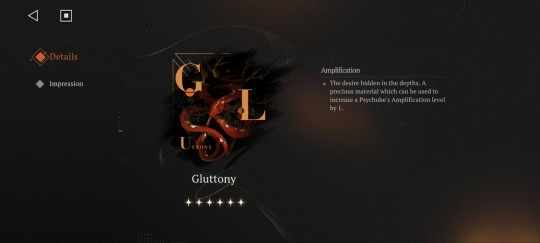

Relevant Background Information
Psychubes are an element of an arcanist's thoughts. They provide buffs/abilities. The more you ponder, the more you gain (in game description). Vertin can reflect and meditate in a process called pneuma analysis (resource stage) twice a day, where she acquires lesser Psychubes, Thought Elements, and Thoughts in Entirety.
Thought Elements: an element of an arcanist’s thoughts. There are so many ways to organize the mess: the furnace that burns and the blade that cuts…but I wish to keep it the way it is.
Thoughts in Entirety: an arcanist’s complete thoughts. As the disorganized has been organized, the darkened vision lightens, ideas are finally taking shape in my mind.
These are the building blocks for greater ideas, which would be higher level Psychubes. On the Psychube page in the Atlas, you will also see the phrase word anamnesis.
In Platonic philosophy, anamnesis is a process of rediscovering knowledge that the soul already possesses but has forgotten. Plato stated the soul has pre-existing knowledge that is brought back to consciousness through the process of questioning and recollection. However, in Christian and Catholic contexts, anamnesis is recollecting the “Passion, Resurrection, and Ascension of Jesus”. In other words, remembering Jesus’s sacrifice and honoring his memory (this is an oversimplification for the sake of brevity). In general, we can think of anamnesis as a profound reflection or recalling of events.
To summarize, the Psychubes interlap with Vertin's emotional state and have been cultivated by her experiences. She reflects, recollects, and creates stronger “impressions” (from the Psychubes). The definition for impression: an idea, feeling, or opinion about something or someone, especially one formed without conscious thought or on the basis of little evidence. These are all emotion/intuition based. Very fitting for an arcanist.
From a lore perspective, the Psychube Shop is a representation of Vertin’s mind as she turns her thoughts into Psychubes. The different prices represent the time and introspection needed to gather Vertin’s thoughts. She needs more complete thoughts (Thoughts in Entirety) in order to afford the stronger Psychubes, which means spending more time doing pneuma analysis (farming the stage). The lesser ideas are also the foundation of strong ones. In the game this is represented by engraving a Psychube to make it stronger. (Note: This is how I connected the game mechanics to the lore, but I'm open to other interpretations!)
Gluttony is not a Psychube and isn't listed in the Atlas. However, it consumes the most Thoughts in Entirety. The strongest Psychubes are worth 210, but Gluttony is a whopping 300. The Snake symbolizes “desire hidden in the depths.” It gorges on Vertin’s thoughts if she indulges it instead of a Psychube. However, if she allows Gluttony to devour her thoughts, she can amplify an existing Psychube. This could be interpreted as gaining a deeper understanding, but to get there she needs to get obsessed/fixated/focused. This is reflected in the large amount of thoughts she needs to invest in Gluttony before she can amplify her chosen Psychube.
But what exactly is Gluttony and why is it slithering around in Vertin’s soul?
The Serpent and the Sin
Gluttony is represented by a snake, which we can also refer to as a serpent.
In the Bible, snakes are often associated with deception and temptation. The serpent in the Garden of Eden is commonly interpreted as a symbol of Satan tempting Eve to disobey God. Snakes also represent danger and evil.
In the biblical story of the Garden of Eden, the serpent tempts Eve to eat the forbidden fruit (Apple) from the Tree of Knowledge. The serpent challenges God's command, suggesting that eating the fruit will not lead to death but rather make Eve and Adam godlike, “knowing good and evil”. The serpent manipulates Eve, creating doubt about God's intentions and enticing her with the idea of gaining knowledge and wisdom. Eve eventually succumbs to the temptation, eats the forbidden fruit, and shares it with Adam. Their disobedience led to their expulsion from the Garden of Eden. The story is a lesson on disobedience and its consequences. The snake was also cursed by God to crawl on its belly and eat dust.
While snakes aren't evil in every context, keep this story in mind.
With the Snake symbolism established, we can look at the Sin.
The Seven Deadly Sins are Lust, Gluttony, Greed, Sloth, Wrath, Envy and Pride.
Going a step further, Lust, Gluttony, and Greed share a theme: excessive desire. People carrying these sins are deemed insatiable.
Gluttony refers to excessive indulgence in food or drink. It involves overconsumption beyond what is necessary, often driven by an unrestrained appetite or desire for pleasure. It’s a sinful behavior due to its focus on self-indulgence and lack of moderation.
However, we haven’t seen any behavior to connect Vertin with Gluttony. In fact, she displays the exact opposite and reflects Gluttony’s counterpart: Temperance. Temperance is one of the Seven Virtues (opposite of Seven Sins). According to Wikipedia Temperance is the practice of moderation and voluntary self-restraint. It involves refraining from vengeful actions through mercy and forgiveness, avoiding arrogance through humility, and curbing excesses like luxury, overindulgence in food and drink, as well as managing rage through calmness. This is Vertin’s whole persona as the stoic Timekeeper. She asks for nothing, but is always ready to give. During Green Lake, we see her explicitly say things like she doesn’t have wishes because she already has everything she needs but she goes out of her way to fulfill other people’s desires.
So Why a Snake? Why use the term Gluttony?
In Vertin’s case, I’d say a “hunger for knowledge” suits her. She wanted to know the outside world to the extent of letting herself get hurt in (electric fence and punishments from teachers) in the process. She craved more while everyone else obeyed the Foundation and stayed in their lane. Smoltin could never be satisfied within the Foundation’s walls.
While it’s true she had an insatiable curiosity, she is not Eve in this story.
She was the Serpent.
During the break away event, Vertin enticed the other children to disobey. She tempted them, just like the snake who tempted Eve. She challenged everything they knew the way the Snake planted doubts about God. The other children were swayed by her which ended up getting them Reversed. Now she is the Timekeeper, doomed to helplessly watch history repeat as she loses friends and allies. The snake was cursed to crawl on its belly, and she was cursed to brave the Storm as Eras end.
Maturity and trauma go hand in hand since children who experience trauma are forced to grow up faster than others. Vertin wanted “too much”, and look at where it got her. She has her own goals and desires of course, but Vertin doesn’t ask for much compared to her crew. Vertin is also a victim of other people’s greed like Constantine, and as of recently, Arcana. What if she’s afraid she’ll become like the people who hurt her and her friends? Who continue to hurt her physically and emotionally?
Gluttony could be what Vertin perceives as her sin. She could have a skewed perception of herself. She wants things like everyone else, but wanting things is “wrong.” Wanting too much will make her hurt people. This is why Gluttony is part of her psyche along with the psychubes she manifests. It’s not a conclusion or idea she needs to come to because it's already coiled up in her mind. It lives there. To clarify Vertin has desires but chooses not to act on them. Its similar to not being able to control your emotions, but you can manage how they manifest to some degree.
The repression is intense.
“The snake is hissing to find its way. It is now clear where to go and what to bite. It opens its mouth, it protrudes its fangs, it sinks them into the prey.”
Fun fact, snakes are predators that can unhinge their jaws to eat their prey whole after they subdued them. It fits right into the concept of Gluttony. Idk how you want to interpret this but to me it shows someone who knows what they want, knows how to get what they want, and has the means to claim it without hesitance. Yet, Vertin doesn't indulge this part of her (Unlike Constantine and Arcana). What do you think? There are so many ways to interpret this!
TL;DR: Psychubes are linked to Vertin's emotions and experiences, cultivated through reflection and meditation in a process called pneuma analysis. Anamnesis, mentioned in the game's Atlas, connects to Platonic philosophy and Christian contexts, representing a profound recollection of events. Gluttony, symbolized by a snake, consumes Thoughts in Entirety, reflecting excessive desire and temptation akin to the biblical story of the serpent in the Garden of Eden. Despite Vertin's displayed Temperance, Gluttony resides in her heart. Her trauma represses many of her “hidden desires”. The symbolism of Gluttony, both in the lore and game mechanics, adds depth to Vertin's character.
Disclaimer: there is also a serpent on the Insight Material “Fruit of Good and Evil” but that will be a discussion for another time because we’re focusing on Gluttony.
More Psychube Stuff:
118 notes
·
View notes
Text
one of the weird things about the "haha europeans are all like 2 miles away from each other" (besides that it's untrue, the distance from Edinburgh to London would take you from New York to Virginia actually) is
like
you do get that you're the weird ones here, right?
Like, genuinely, statistically, it's not that European (and African and Asian) countries are small, it's that the USA is unreasonably massive.
and like. the states are unreasonably massive. every single American state is the size of a country. the median-sized state (Indiana, I believe) would on its own be the 18th biggest country in the world, and even Rhode Island is bigger than 29 actual entire countries.
which i think is not at all unconnected from how young the US, Canada, Brazil, Australia, and other massive continent-spanning nations are. They're countries founded with the sole goal of "claim land", and typically with an exterminationist approach to the locals - compare to the also often huge African and Middle Eastern states, which were colonial projects which didn't necessarily care about the history and politics of the region, but which were on the whole at least partly trying to claim people as well as land. meanwhile America was viewed as just... land. uninhabited land. we can have as much as we want, and with the power of modern infrastructure ("modern" meaning "the past 400 years") we can administrate at that scale.
compare and contrast with Old World countries, which have typically been subject to fracture and breakdown above a certain size. Like, to be clear: the entire Roman Empire at its height was around half the size of the continental United States. The only pre-1600 empires to achieve American scale were the 'Umayyad and Abassid Caliphates (both 11.1 million square kilometres), the Mongol Empire (a whopping 24 million square kilometres), and the Yuan Dynasty (11.0 million). Those are the only ones.
even in the age of empires, the only ones bigger than america at their peaks were the russian empire (22.8 million sq km), the qing empire (14.7 million), second french colonial empire (11.5 million), and of course the british empire (35.5 million, to my knowledge the largest land area ever held under a single state power - note that Canada alone made up over a quarter of that! nearly half of the british empire's land area was just Canada and Australia, which combine to around 17.5 million sq km)
but those empires were not countries! (well. okay. I don't know about the Qing and how they viewed their holdings, i am not very educated on chinese history.) But the European ones, at least, were very decidedly empires - a central nation-state administering colonies which were not their own nation-states, but definitely weren't part of the central nation.
which is all to say: Russia, Canada, China, America, Brazil, and Australia - the top 6 nations by land area, and I'm saying top 6 because the 7th (India) is less than half the size of Australia - are historical and geographical aberrations. that doesn't mean they're Bad any more than being big means they're Good. it just means
my dudes
we're not the weird ones, you are.
#i don't know why i am thinking about this so hard#i have been chewing on it all week for No Reason#anyway please note that 4/6 of the Massive Unreasonable Countries are new world ex-colonies#idk i keep being surprised by just how MASSIVE the states are#and because i think of india (correctly) as being huge... realising that it's only like 1/3 of the size of the usa is fucking insane#canada and the us are both shockingly close to 10 million square kilometres and like DUDE. WHAT.#(canada is circa 9.98 million. usa is circa 9.53 million. that's too many square kilometres my dudes.)#so like. yeah. you're an order of magnitude bigger than most countries. but why do you think that makes YOU normal?#(fyi there are 29 countries which are more than a million square kilometres. which means 166 countries are less than that.)
11 notes
·
View notes
Text
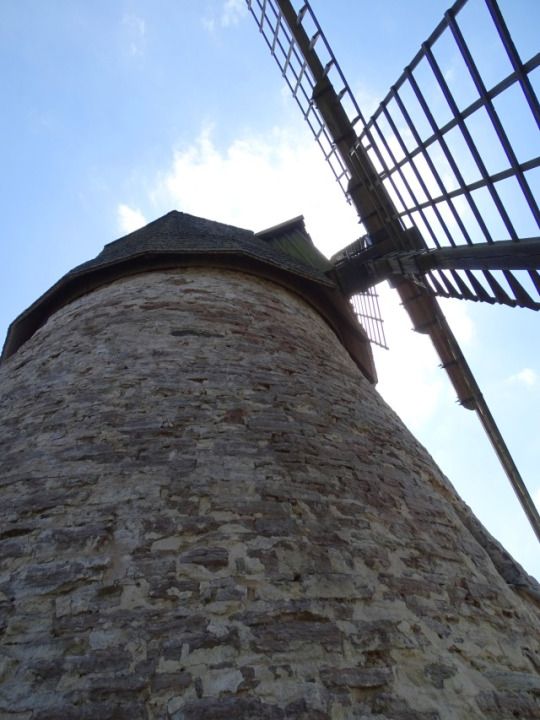













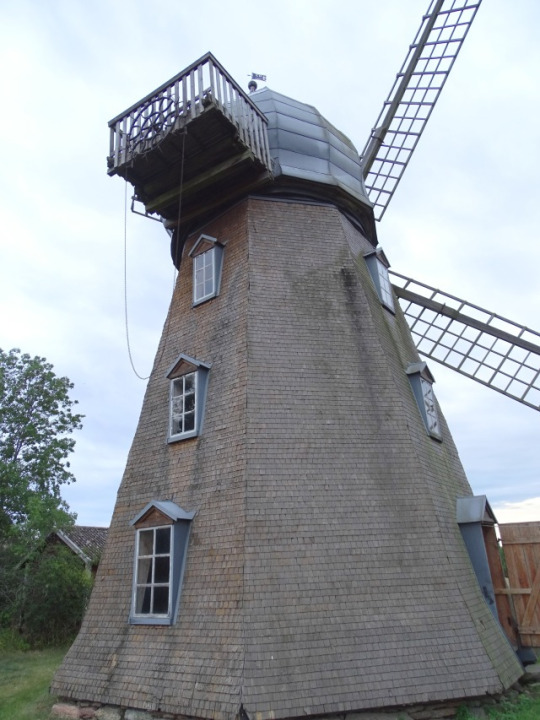


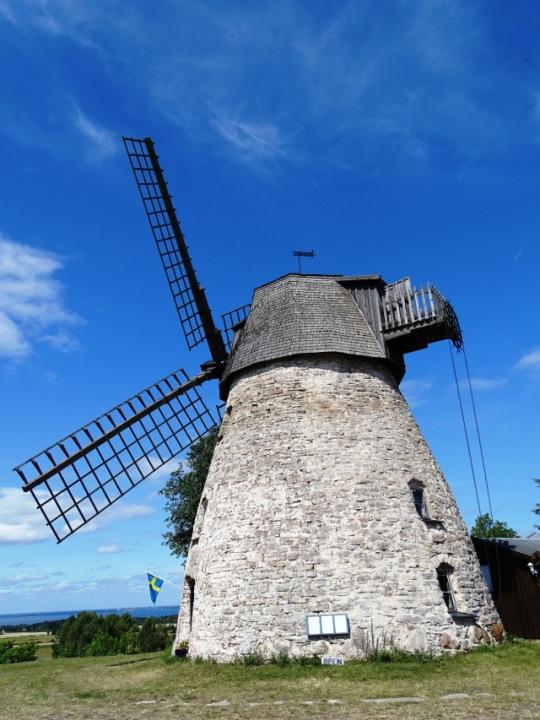

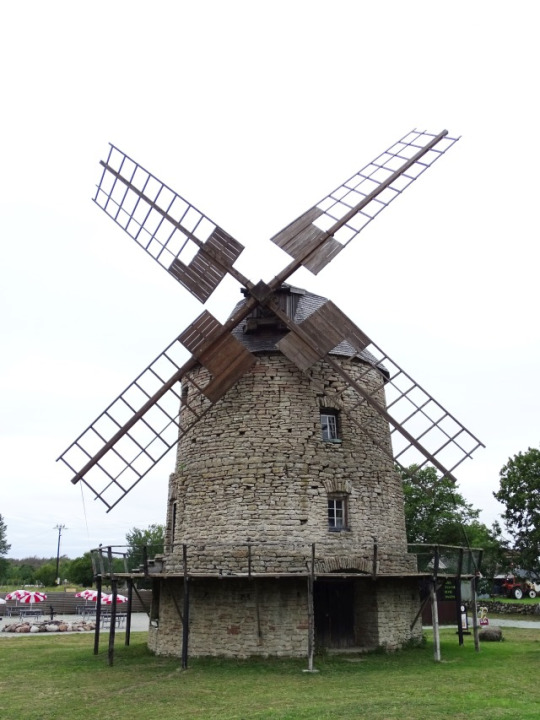


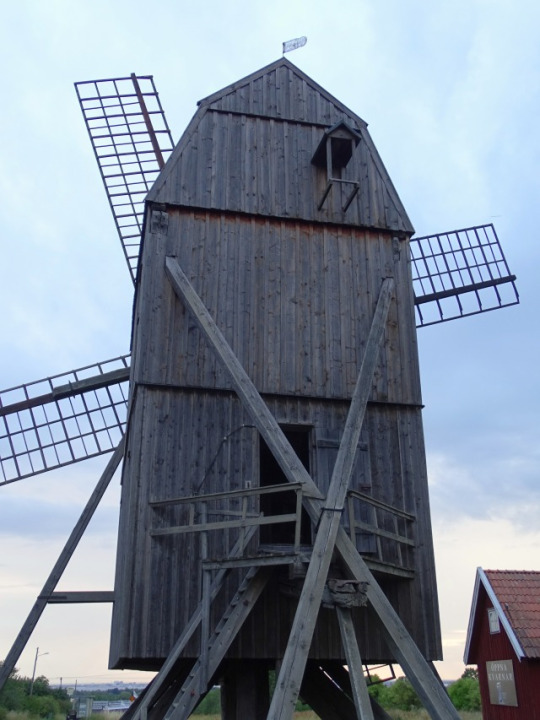
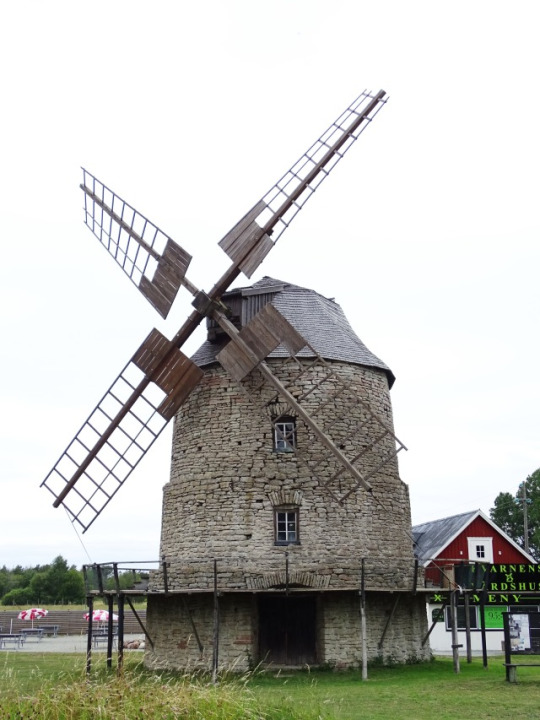


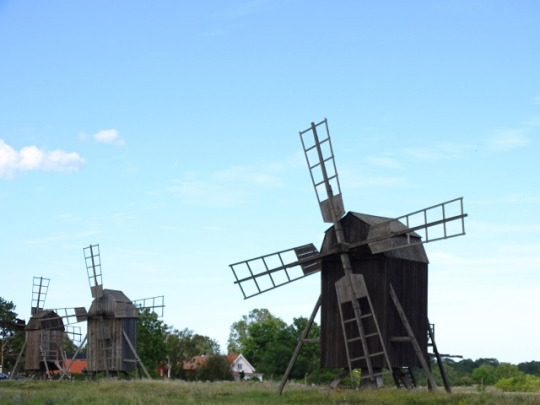
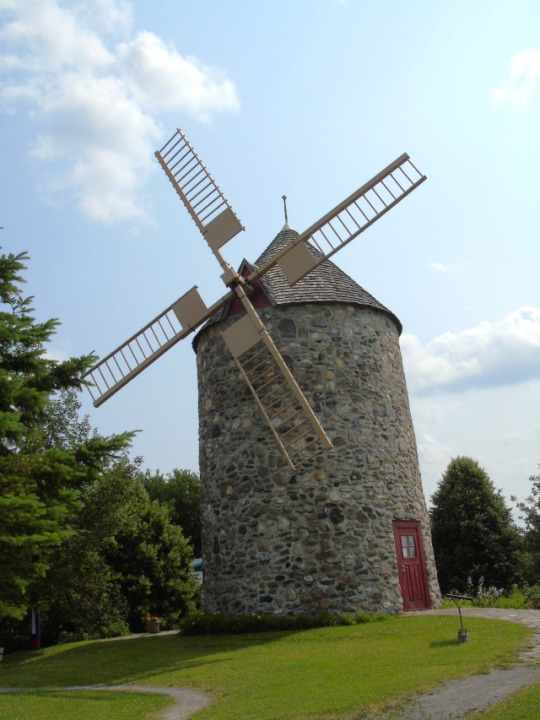
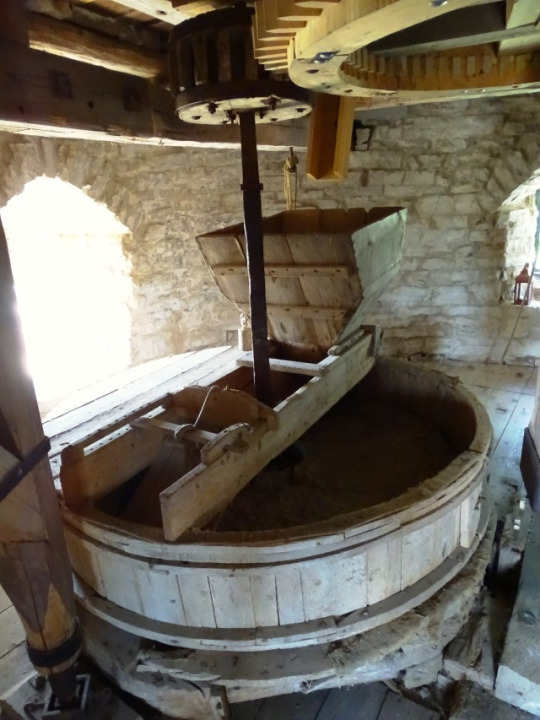

National Windmill Day
Drive out to windmill country, or read up about the history of windmills and how they can provide clean, sustainable energy by harnessing Earth’s natural power.
Most people love them because there’s something absolutely bucolic about their squat structures and the gentle creak of their fins as these wooden structures spin in the natural wind currents. Of course, that describes the old fashioned kind of windmill. The newer, modern versions take on some different characteristics, of course.
Windmills have been around for a very long time, since the time when people first realized it was possible to harness the power of the wind to perform work and provide energy. Ever since new innovations have been made with the ability to utilize the never-ending source of power that windmills capture.
National Windmill Day commemorates the origins of the windmill as well as how it has helped to shape technology and industry from the past and into the future. It’s time to learn about and celebrate National Windmill Day!
History of National Windmill Day
The idea of capturing the power of the wind to perform work isn’t new and, in fact, it goes back far further into history than most people would suspect. Since then, its use has sprung up in multiple cultures throughout the world.
Heron of Alexandria, who lived in the first century AD, was the earliest person known to have harnessed the energy of moving air to perform work, using a very primitive device to power, of all things, a musical instrument: the organ. The people of Persia also developed more traditional windmills, though they had a different orientation than the ones most people typically think of when hearing the word ‘windmill’.
Some historians think that the Persian models were the inspiration for the vertical models that were developed later on in the middle ages. The evidence of one of the oldest windmills that remains today can be found in Weedley, Yorkshire, England and is said to have been built in 1185. As is commonly depicted in media, these machines were used primarily to grind grain, and have been for many centuries since that time.
Recently though, at least in the last 150 years or so, there’s been a growing movement to use windmills in another fashion entirely. The power of the wind can be harnessed to turn giant wind turbines which in turn generate clean, and virtually unlimited, renewable energy.
Windmills have been around for a long long time, and while they may seem like primitive tech, they’ve moved into the world as hope for a clean future. Along with solar, bio-fuel, and fuel cells, windmills are working to save the environment.
National Windmill Day Timeline
644 AD
First reference to windmills
Beginning as horizontal mills with woven reed blades that radiate from a vertical axis, these first windmills are built in Persia.
11th Century AD
Windmills are used for food production
In the Middle East, windmills are used to help produce food and the ideas are then taken to Europe by merchants and crusaders.
1300s
Windmills are used to drain water
The Dutch people of the Netherlands realize that the water from their low-lying areas can be drained using windmills.
1600s
Windmills are introduced to the New World
When the Dutch colonize New Amsterdam (now called New York City), they bring their windmill designs with them
1887
First large scale power generating wind turbine
Charles F. Brush builds a huge 60-foot windmill with a whopping 144 blades in Cleveland, Ohio.
How to Celebrate National Windmill Day
Learn More About Windmills
Well perhaps to first thing to do is start by reading up on the topic of windmills. One of the best things that can be done to celebrate the day is to get more educated on the history of windmills, to begin learning how they’re helping us today, and even to share that information with others. As one of the fastest growing sources of energy in the world, it’s worth learning more about!
Here are some interesting facts about windmills:
The first modern version of the wind turbine was built in Vermont, USA in the 1940s. Its success was not long lived due to war shortages and the next time a windmill would rival it in size would be in 1979.
Hawaii, USA hosts the world’s largest wind turbine, which is the height of a 20 story building and its blades are the length of a football field.
Offshore wind is particularly effective. In Europe, one offshore wind turbine (located in the water) can power more than 1500 homes.
Read Don Quixote
Famous (or perhaps, infamous) for his mistake in thinking that windmills are giant monsters, Don Quixote bravely rides toward them to do battle and, of course, eventually gets knocked off his horse. This is just one of the many beloved and memorable scenes in this classic novel by Spanish author, Miquel de Cervantes, published in 1606.
Visit Holland for National Windmill Day
While not necessarily the first place to house windmills, Holland (now known as The Netherlands) has a long history with them as they were the first place to use them to move water from low lying lands. In fact, the second Saturday and Sunday in May (because one day just isn’t enough!) are celebrated in Holland as “National Mill Day”, which is called Molendag in Dutch. This is a day when 950 windmills and watermills will open their doors to the public for visitors to see their inner workings first hand and learn more about them. Plus, many of them will also host fun events for the local community and tourists alike.
Whether in Amsterdam or throughout the rest of this country filled with canals and waterways, the windmills are stunning. It’s even possible to go on a bike tour of the mills to visit some of the most beautiful, iconic and picturesque mills in the world!
Those who find other countries in Europe to be more accessible can celebrate National Windmill Day in the United Kingdom, Germany, Switzerland and other countries, where it is often referred to as National Mills Day.
Watch Some Windmills
For those who happen to live in an area that has a single windmill or a whole windmill farm, it might be fun and interesting to go out and watch them turn, turn, turn… (Are we the only one hearing that song now?) More and more communities are dotting them about the landscape as a sustainable source of power. As you gaze upon and contemplate just how important these are to a bright, pollution-free future for our children, enjoy watching their soothing motion and consider their history too.
National Windmill Day FAQs
How do windmills work?
Wind turbines use their large blades to collect kinetic energy as the wind flows over the blades to create “lift”.
Do windmills make noise?
Windmills do emit a characteristic noise, mainly generated by the movement of the blades, but the noise is generally weak.
Are windmills renewable energy?
Wind is an emissions-free source of energy that has fewer effects on the environment than many other energy sources.
Do windmills create electricity?
Yes! Wind turns the propellers of the windmill around a rotor that, in turn, spins a generator to create electricity.
How much do windmills cost?
The standard windmill costs around $2-4 million with another $40-50,000 in per year in operation and maintenance.
Source
#Resmobacken#WindmillDay#Windmill Day#second Saturday in May#Öland#10 May 2025#architecture#engineering#tourist attraction#travel#vacation#landmark#Karlevi Dutch Windmill#Lerkaka#Sweden#Kalmar County#Högby#Kvarnkungen#Färjestaden#Kvarn Drottningen#Saint-Grégoire-le-Grand#Canada#Québec#Slottsmöllan#Malmö#Castle Mill#Sverige#Scandinavia#National Windmill Day#original photography
3 notes
·
View notes
Text
Shell

we sell seashells by the seashore this sunny Sunday, folks. seashells come in many beautiful and varied designs, such as the infamously iridescent abalone, the starlike long spined limpet, and this rose nautilus shell that almost looks too good to be real



this is the largest snail shell in the world, belonging to the Syrinx Auranus or False Trumpet snail. These behemoths can weigh up to 40 lbs.!

of course the biggest, as we all know, are giant clams, weighing in at a whopping 440!

I also can't not mention the ingenious design of the violet sea snail (Janthina Janthina) which uses clear chitin air bubbles in its shell to float about harmlessly on the water's surface.
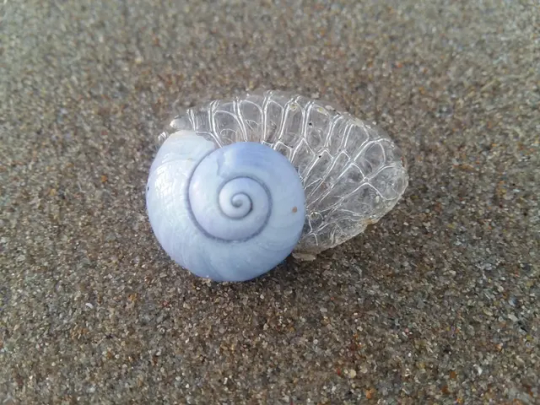
in terms of uses nowadays, you'll mostly find shells in jewelry or kitschy decorations


as well as the rare and expensive modern use of handmade mother of pearl inlay

but, as with all the previous materials, shells have their historic uses as well, for things like early axes, shovels, scrapers, fishhooks, and even oil lamps. And of course, the shell trumpet.

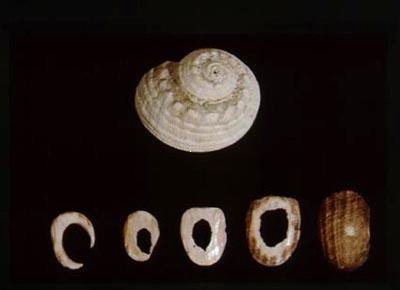


I bet you can't guess what the windowpane oyster was historically used for

shells have been used for buttons for many years too! works like a charm!
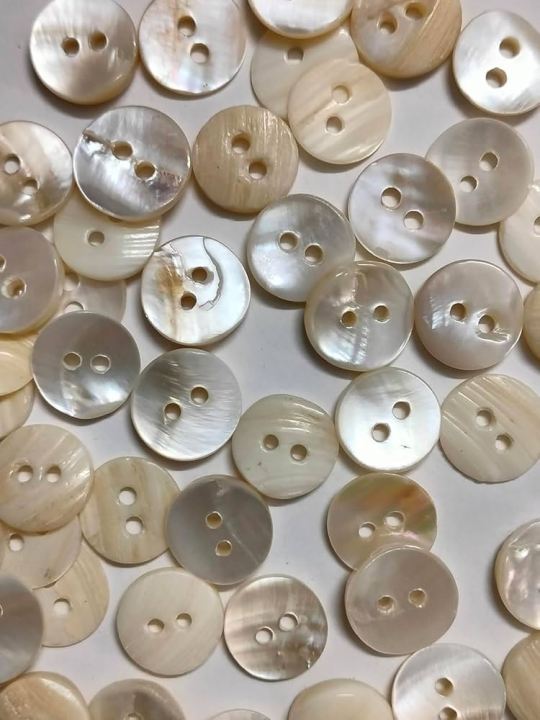
of course there are the luxury nonsensities, as there always are. Like this nautilus cup from 1600s Netherlands

shells were even used as currency themselves at one point, like the quahog clamshell wampum of the Iroquois, or cowrie shells traded all over Africa and Asia


of course, it's not just seashells that were used. We know how much of an impact the popularity of real turtleshell goods had on wild populations. With our new 30th century tools though, such cruelties are a thing of the distant past, being able to recreate authentic hawksbill shell down to the molecular level! Don't you just love modern technology?

Oh, here's another thing shells are good for! the calcium carbonate in them can be burned and crushed down to make a kind of quicklime for concrete. Maybe you'll see the return of that later for our cement showcasing, eh?

lastly, I feel it necessary to mention at least one tale of caution in working with shells. Gillian Genser made this beautiful sculpture of Adam, the first man, from blue mussel shells. Unfortunately, unbeknownst to her at the time, the filter-feeding of bivalves like the mussels she worked with cause an accumulation of heavy metals in the shells, the fine dust of which was inhaled by her over time and led to lifelong disability from poisoning. We love to say that artists suffer for their work, but in this case that's a suffering I'd rather you avoid if you know you should!

well that's all for now! I'll shelve the shells for another day, and see you tomorrow!
#uncrafting's items#material showcase#multiple items#organic#terra certified#shells#tools#decorations#lighting#house stuff#art supplies
3 notes
·
View notes
Text

MarInk Day 11: Wander
This isn't actually fanart of any media or an OC, but rather a drawing of a real animal! This is OR-7, also nicknamed "Journey". He is a real wolf walked a whopping 1600 kilometres, and he was also the first wolf in a long time to return to both California and western Oregon. You can read more about him here: https://en.wikipedia.org/wiki/OR-7
I didn't just choose OR-7 for today's prompt because he "wandered" a lot, though. A children's book based on OR-7's journey was actually written a few years ago, called "A Wolf Called Wander". In this book they named OR-7 "Wander" rather than Journey or his designation, which is why I chose him from this prompt. The word Wander is intrinsically connected to OR-7 to me.
The head came out a little too big but eh what can you do.
#wolf#artists on tumblr#traditional art#or-7#journey#a wolf called wander#wolves#gray wolf#grey wolf#my art#art#sketchbook#marink#inktober
13 notes
·
View notes
Text
Massive $2.4M BlockDAG Buy Just Before Batch 21 Sells Out; SHIB’s Uncertain Future & Stellar’s Dip
As the market bounces back from its recent crash, everyone’s on the hunt for the top crypto to buy this year. This article dives into the performances of Shiba Inu, Stellar, and BlockDAG to help holders find the best choice.
Shiba Inu is hovering around $0.00001409, with a modest 2% gain in the last 24 hours. However, it has bounced back nearly 30% from its recent low, leaving analysts divided on where its price prediction might head next.
Stellar’s story is a bit gloomier—XLM has dropped 30% in 2024, showing only minor growth in its payments model.
On the brighter side, BlockDAG is generating serious optimism. After skyrocketing by 1600%, this Layer 1 project is attracting whale purchases of up to $2.4 million in its current 21st batch. Why? Because BDAG is expected to soar by 5800%, from its current price of $0.017 per coin to $1 soon. SHIB Price Prediction Shows Mixed Signals Shiba Inu has had its ups and downs, but it’s currently sitting at $0.00001409, showing a modest 2% gain in the last 24 hours. After hitting a low of $0.00001087, the meme coin has bounced back by nearly 30%.
Analysts are split on where SHIB might go next. Some, like Himanshu Maradiya of CIFDAQ, are optimistic, predicting it could reach $0.0001 this year. Others, like Utkarsh Tiwari of KoinBX, are more cautious, suggesting a less dramatic rise.
Stellar (XLM) Is Still Down 30%: Holders Remain Anxious Stellar has managed to weather the recent crypto storm better than many, with only a 7% drop this week. However, it’s still down 30% for 2024, continuing its underperformance since the 2021 crash.
While Stellar’s payments model has seen some minor growth, it hasn’t quite bounced back. The focus in the crypto world has shifted toward new use cases like GambleFi, leaving Stellar’s goal of replacing fiat currencies for daily transactions feeling a bit outdated. Despite its resilience, Stellar’s growth remains sluggish as the market moves in new directions.
BlockDAG’s Batch 21 Almost Sold Out: Massive Whale Purchases Ongoing! BlockDAG presale’s has become the newest obsession in the market, and it's not just small-time holders getting in on the action—whales are making some serious moves.
BlockDAG, a cutting-edge Layer 1 project that's challenging the likes of Bitcoin and Ethereum, recently smashed through the $66 million mark in its presale. What’s more impressive is that this happened in just 21 batches, with the price of BDAG surging from $0.001 to $0.017—a whopping 1600% increase. Industry insiders are now predicting that BDAG could hit $1 per coin, which would mean a staggering 5800% return for those who buy in before Batch 21 sells out.
But here’s where it gets even more interesting: big players, known as whales, are pouring massive amounts into BDAG, with individual investments reaching up to $2.4 million.
This level of confidence from large-scale holders signals that BlockDAG isn’t just another crypto—it’s a top choice with huge market potential. With over 100,000 holders already on board, BlockDAG’s future looks incredibly promising.
However, with demand through the roof, Batch 21 is almost sold out. Those looking to secure a spot before the price jumps again need to act fast. As BlockDAG gears up to enter Batch 22, another price surge seems inevitable.
The buzz around BlockDAG is undeniable, and with whales leading the charge, this could very well be the next big thing in crypto. Don’t wait too long—opportunities like this don’t last forever.
Over & Out! So, the numbers have spoken.
SHIB’s price prediction is still up in the air—some predict a big jump, while others caution against a potential dip. Stellar, meanwhile, is having a tough time recovering after a 30% drop this year.
But BlockDAG is a different tale altogether. Demand for BDAG coins is through the roof, and it’s all about getting in on the action before the 21st presale batch sells out. Why the rush? Because BDAG’s price could hit $1 per coin in the coming months, offering batch 21 holders a whopping 5800% return.
With whales snapping up coins worth over $2.4 million, this batch is on the verge of selling out. To lock in those potential returns, quick action is key—before this opportunity slips away
www.cifdaq.com
0 notes
Text
Massive $2.4M BlockDAG Buy Just Before Batch 21 Sells Out
Massive $2.4M BlockDAG Buy Just Before Batch 21 Sells Out; SHIB’s Uncertain Future & Stellar’s Dip
As the market bounces back from its recent crash, everyone’s on the hunt for the top crypto to buy this year. This article dives into the performances of Shiba Inu, Stellar, and BlockDAG to help holders find the best choice.
Shiba Inu is hovering around $0.00001409, with a modest 2% gain in the last 24 hours. However, it has bounced back nearly 30% from its recent low, leaving analysts divided on where its price prediction might head next.
Stellar’s story is a bit gloomier—XLM has dropped 30% in 2024, showing only minor growth in its payments model.
On the brighter side, BlockDAG is generating serious optimism. After skyrocketing by 1600%, this Layer 1 project is attracting whale purchases of up to $2.4 million in its current 21st batch. Why? Because BDAG is expected to soar by 5800%, from its current price of $0.017 per coin to $1 soon.
SHIB Price Prediction Shows Mixed Signals Shiba Inu has had its ups and downs, but it’s currently sitting at $0.00001409, showing a modest 2% gain in the last 24 hours. After hitting a low of $0.00001087, the meme coin has bounced back by nearly 30%.
Analysts are split on where SHIB might go next. Some, like Himanshu Maradiya of CIFDAQ, are optimistic, predicting it could reach $0.0001 this year. Others, like Utkarsh Tiwari of KoinBX, are more cautious, suggesting a less dramatic rise.
Stellar (XLM) Is Still Down 30%: Holders Remain Anxious Stellar has managed to weather the recent crypto storm better than many, with only a 7% drop this week. However, it’s still down 30% for 2024, continuing its underperformance since the 2021 crash.
While Stellar’s payments model has seen some minor growth, it hasn’t quite bounced back. The focus in the crypto world has shifted toward new use cases like GambleFi, leaving Stellar’s goal of replacing fiat currencies for daily transactions feeling a bit outdated. Despite its resilience, Stellar’s growth remains sluggish as the market moves in new directions.
BlockDAG’s Batch 21 Almost Sold Out: Massive Whale Purchases Ongoing! BlockDAG presale’s has become the newest obsession in the market, and it’s not just small-time holders getting in on the action—whales are making some serious moves.
BlockDAG, a cutting-edge Layer 1 project that’s challenging the likes of Bitcoin and Ethereum, recently smashed through the $66 million mark in its presale. What’s more impressive is that this happened in just 21 batches, with the price of BDAG surging from $0.001 to $0.017—a whopping 1600% increase.
Industry insiders are now predicting that BDAG could hit $1 per coin, which would mean a staggering 5800% return for those who buy in before Batch 21 sells out.
But here’s where it gets even more interesting: big players, known as whales, are pouring massive amounts into BDAG, with individual investments reaching up to $2.4 million.
This level of confidence from large-scale holders signals that BlockDAG isn’t just another crypto—it’s a top choice with huge market potential. With over 100,000 holders already on board, BlockDAG’s future looks incredibly promising.
However, with demand through the roof, Batch 21 is almost sold out. Those looking to secure a spot before the price jumps again need to act fast. As BlockDAG gears up to enter Batch 22, another price surge seems inevitable.
The buzz around BlockDAG is undeniable, and with whales leading the charge, this could very well be the next big thing in crypto. Don’t wait too long—opportunities like this don’t last forever.
Over & Out! So, the numbers have spoken.
SHIB’s price prediction is still up in the air—some predict a big jump, while others caution against a potential dip. Stellar, meanwhile, is having a tough time recovering after a 30% drop this year.
But BlockDAG is a different tale altogether. Demand for BDAG coins is through the roof, and it’s all about getting in on the action before the 21st presale batch sells out. Why the rush? Because BDAG’s price could hit $1 per coin in the coming months, offering batch 21 holders a whopping 5800% return.
With whales snapping up coins worth over $2.4 million, this batch is on the verge of selling out. To lock in those potential returns, quick action is key—before this opportunity slips away
www.cifdaq.com
0 notes
Text
Massive $2.4M BlockDAG Buy Just Before Batch 21 Sells Out; SHIB’s Uncertain Future & Stellar’s Dip
As the market bounces back from its recent crash, everyone’s on the hunt for the top crypto to buy this year. This article dives into the performances of Shiba Inu, Stellar, and BlockDAG to help holders find the best choice.
Shiba Inu is hovering around $0.00001409, with a modest 2% gain in the last 24 hours. However, it has bounced back nearly 30% from its recent low, leaving analysts divided on where its price prediction might head next.
Stellar’s story is a bit gloomier—XLM has dropped 30% in 2024, showing only minor growth in its payments model.
On the brighter side, BlockDAG is generating serious optimism. After skyrocketing by 1600%, this Layer 1 project is attracting whale purchases of up to $2.4 million in its current 21st batch. Why? Because BDAG is expected to soar by 5800%, from its current price of $0.017 per coin to $1 soon.
SHIB Price Prediction Shows Mixed Signals Shiba Inu has had its ups and downs, but it’s currently sitting at $0.00001409, showing a modest 2% gain in the last 24 hours. After hitting a low of $0.00001087, the meme coin has bounced back by nearly 30%.
Analysts are split on where SHIB might go next. Some, like Himanshu Maradiya of CIFDAQ, are optimistic, predicting it could reach $0.0001 this year. Others, like Utkarsh Tiwari of KoinBX, are more cautious, suggesting a less dramatic rise.
Stellar (XLM) Is Still Down 30%: Holders Remain Anxious Stellar has managed to weather the recent crypto storm better than many, with only a 7% drop this week. However, it’s still down 30% for 2024, continuing its underperformance since the 2021 crash.
While Stellar’s payments model has seen some minor growth, it hasn’t quite bounced back. The focus in the crypto world has shifted toward new use cases like GambleFi, leaving Stellar’s goal of replacing fiat currencies for daily transactions feeling a bit outdated. Despite its resilience, Stellar’s growth remains sluggish as the market moves in new directions.
BlockDAG’s Batch 21 Almost Sold Out: Massive Whale Purchases Ongoing! BlockDAG presale’s has become the newest obsession in the market, and it’s not just small-time holders getting in on the action—whales are making some serious moves.
BlockDAG, a cutting-edge Layer 1 project that’s challenging the likes of Bitcoin and Ethereum, recently smashed through the $66 million mark in its presale. What’s more impressive is that this happened in just 21 batches, with the price of BDAG surging from $0.001 to $0.017—a whopping 1600% increase.
Industry insiders are now predicting that BDAG could hit $1 per coin, which would mean a staggering 5800% return for those who buy in before Batch 21 sells out.
But here’s where it gets even more interesting: big players, known as whales, are pouring massive amounts into BDAG, with individual investments reaching up to $2.4 million.
This level of confidence from large-scale holders signals that BlockDAG isn’t just another crypto—it’s a top choice with huge market potential. With over 100,000 holders already on board, BlockDAG’s future looks incredibly promising.
However, with demand through the roof, Batch 21 is almost sold out. Those looking to secure a spot before the price jumps again need to act fast. As BlockDAG gears up to enter Batch 22, another price surge seems inevitable.
The buzz around BlockDAG is undeniable, and with whales leading the charge, this could very well be the next big thing in crypto. Don’t wait too long—opportunities like this don’t last forever.
Over & Out! So, the numbers have spoken.
SHIB’s price prediction is still up in the air—some predict a big jump, while others caution against a potential dip. Stellar, meanwhile, is having a tough time recovering after a 30% drop this year.
But BlockDAG is a different tale altogether. Demand for BDAG coins is through the roof, and it’s all about getting in on the action before the 21st presale batch sells out. Why the rush? Because BDAG’s price could hit $1 per coin in the coming months, offering batch 21 holders a whopping 5800% return.
With whales snapping up coins worth over $2.4 million, this batch is on the verge of selling out. To lock in those potential returns, quick action is key—before this opportunity slips away
www.cifdaq.com
0 notes
Text
Massive $2.4M BlockDAG Buy Just Before Batch 21 Sells Out; SHIB’s Uncertain Future & Stellar’s Dip
As the market bounces back from its recent crash, everyone’s on the hunt for the top crypto to buy this year. This article dives into the performances of Shiba Inu, Stellar, and BlockDAG to help holders find the best choice. Shiba Inu is hovering around $0.00001409, with a modest 2% gain in the last 24 hours. However, it has bounced back nearly 30% from its recent low, leaving analysts divided on where its price prediction might head next.Stellar’s story is a bit gloomier—XLM has dropped 30% in 2024, showing only minor growth in its payments model.On the brighter side, BlockDAG is generating serious optimism. After skyrocketing by 1600%, this Layer 1 project is attracting whale purchases of up to $2.4 million in its current 21st batch. Why? Because BDAG is expected to soar by 5800%, from its current price of $0.017 per coin to $1 soon.
SHIB Price Prediction Shows Mixed Signals Shiba Inu has had its ups and downs, but it’s currently sitting at $0.00001409, showing a modest 2% gain in the last 24 hours. After hitting a low of $0.00001087, the meme coin has bounced back by nearly 30%.Analysts are split on where SHIB might go next. Some, like Himanshu Maradiya of CIFDAQ, are optimistic, predicting it could reach $0.0001 this year. Others, like Utkarsh Tiwari of KoinBX, are more cautious, suggesting a less dramatic rise.
Stellar (XLM) Is Still Down 30%: Holders Remain Anxious Stellar has managed to weather the recent crypto storm better than many, with only a 7% drop this week. However, it’s still down 30% for 2024, continuing its underperformance since the 2021 crash. While Stellar’s payments model has seen some minor growth, it hasn’t quite bounced back. The focus in the crypto world has shifted toward new use cases like GambleFi, leaving Stellar’s goal of replacing fiat currencies for daily transactions feeling a bit outdated. Despite its resilience, Stellar’s growth remains sluggish as the market moves in new directions.
BlockDAG’s Batch 21 Almost Sold Out: Massive Whale Purchases Ongoing! BlockDAG presale’s has become the newest obsession in the market, and it’s not just small-time holders getting in on the action—whales are making some serious moves. BlockDAG, a cutting-edge Layer 1 project that’s challenging the likes of Bitcoin and Ethereum, recently smashed through the $66 million mark in its presale. What’s more impressive is that this happened in just 21 batches, with the price of BDAG surging from $0.001 to $0.017—a whopping 1600% increase. Industry insiders are now predicting that BDAG could hit $1 per coin, which would mean a staggering 5800% return for those who buy in before Batch 21 sells out.But here’s where it gets even more interesting: big players, known as whales, are pouring massive amounts into BDAG, with individual investments reaching up to $2.4 million.
This level of confidence from large-scale holders signals that BlockDAG isn’t just another crypto—it’s a top choice with huge market potential. With over 100,000 holders already on board, BlockDAG’s future looks incredibly promising. However, with demand through the roof, Batch 21 is almost sold out. Those looking to secure a spot before the price jumps again need to act fast. As BlockDAG gears up to enter Batch 22, another price surge seems inevitable. The buzz around BlockDAG is undeniable, and with whales leading the charge, this could very well be the next big thing in crypto. Don’t wait too long—opportunities like this don’t last forever.
Over & Out! So, the numbers have spoken. SHIB’s price prediction is still up in the air—some predict a big jump, while others caution against a potential dip. Stellar, meanwhile, is having a tough time recovering after a 30% drop this year.But BlockDAG is a different tale altogether. Demand for BDAG coins is through the roof, and it’s all about getting in on the action before the 21st presale batch sells out. Why the rush? Because BDAG’s price could hit $1 per coin in the coming months, offering batch 21 holders a whopping 5800% return.
www.cifdaq.com
0 notes
Text

As the market bounces back from its recent crash, everyone’s on the hunt for the top crypto to buy this year. This article dives into the performances of Shiba Inu, Stellar, and BlockDAG to help holders find the best choice.
Shiba Inu is hovering around $0.00001409, with a modest 2% gain in the last 24 hours. However, it has bounced back nearly 30% from its recent low, leaving analysts divided on where its price prediction might head next.
Stellar’s story is a bit gloomier—XLM has dropped 30% in 2024, showing only minor growth in its payments model.
On the brighter side, BlockDAG is generating serious optimism. After skyrocketing by 1600%, this Layer 1 project is attracting whale purchases of up to $2.4 million in its current 21st batch. Why? Because BDAG is expected to soar by 5800%, from its current price of $0.017 per coin to $1 soon.
SHIB Price Prediction Shows Mixed Signals
Shiba Inu has had its ups and downs, but it’s currently sitting at $0.00001409, showing a modest 2% gain in the last 24 hours. After hitting a low of $0.00001087, the meme coin has bounced back by nearly 30%. Analysts are split on where SHIB might go next. Some, like Himanshu Maradiya of CIFDAQ, are optimistic, predicting it could reach $0.0001 this year. Others, like Utkarsh Tiwari of KoinBX, are more cautious, suggesting a less dramatic rise.
Stellar (XLM) Is Still Down 30%: Holders Remain Anxious
Stellar has managed to weather the recent crypto storm better than many, with only a 7% drop this week. However, it’s still down 30% for 2024, continuing its underperformance since the 2021 crash.
While Stellar’s payments model has seen some minor growth, it hasn’t quite bounced back. The focus in the crypto world has shifted toward new use cases like GambleFi, leaving Stellar’s goal of replacing fiat currencies for daily transactions feeling a bit outdated. Despite its resilience, Stellar’s growth remains sluggish as the market moves in new directions.
BlockDAG’s Batch 21 Almost Sold Out: Massive Whale Purchases Ongoing!
BlockDAG presale’s has become the newest obsession in the market, and it's not just small-time holders getting in on the action—whales are making some serious moves.
BlockDAG, a cutting-edge Layer 1 project that's challenging the likes of Bitcoin and Ethereum, recently smashed through the $66 million mark in its presale. What’s more impressive is that this happened in just 21 batches, with the price of BDAG surging from $0.001 to $0.017—a whopping 1600% increase.
Industry insiders are now predicting that BDAG could hit $1 per coin, which would mean a staggering 5800% return for those who buy in before Batch 21 sells out.
This level of confidence from large-scale holders signals that BlockDAG isn’t just another crypto—it’s a top choice with huge market potential. With over 100,000 holders already on board, BlockDAG’s future looks incredibly promising.
However, with demand through the roof, Batch 21 is almost sold out. Those looking to secure a spot before the price jumps again need to act fast. As BlockDAG gears up to enter Batch 22, another price surge seems inevitable.
The buzz around BlockDAG is undeniable, and with whales leading the charge, this could very well be the next big thing in crypto. Don’t wait too long—opportunities like this don’t last forever.
Over & Out!
So, the numbers have spoken.
SHIB’s price prediction is still up in the air—some predict a big jump, while others caution against a potential dip. Stellar, meanwhile, is having a tough time recovering after a 30% drop this year.
But BlockDAG is a different tale altogether. Demand for BDAG coins is through the roof, and it’s all about getting in on the action before the 21st presale batch sells out. Why the rush? Because BDAG’s price could hit $1 per coin in the coming months, offering batch 21 holders a whopping 5800% return.
With whales snapping up coins worth over $2.4 million, this batch is on the verge of selling out. To lock in those potential returns, quick action is key—before this opportunity slips away www.cifdaq.com #CIFDAQ #BITCOIN #CRYPTO #BLOCKCHAIN
0 notes
Text
Massive $2.4M BlockDAG Buy Just Before Batch 21 Sells Out; SHIB’s Uncertain Future & Stellar’s Dip
As the market bounces back from its recent crash, everyone’s on the hunt for the top crypto to buy this year. This article dives into the performances of Shiba Inu, Stellar, and BlockDAG to help holders find the best choice.
Shiba Inu is hovering around $0.00001409, with a modest 2% gain in the last 24 hours. However, it has bounced back nearly 30% from its recent low, leaving analysts divided on where its price prediction might head next.
Stellar’s story is a bit gloomier—XLM has dropped 30% in 2024, showing only minor growth in its payments model.
On the brighter side, BlockDAG is generating serious optimism. After skyrocketing by 1600%, this Layer 1 project is attracting whale purchases of up to $2.4 million in its current 21st batch. Why? Because BDAG is expected to soar by 5800%, from its current price of $0.017 per coin to $1 soon.
SHIB Price Prediction Shows Mixed Signals

Analysts are split on where SHIB might go next. Some, like Himanshu Maradiya of CIFDAQ, are optimistic, predicting it could reach $0.0001 this year. Others, like Utkarsh Tiwari of KoinBX, are more cautious, suggesting a less dramatic rise.
Stellar (XLM) Is Still Down 30%: Holders Remain Anxious

While Stellar’s payments model has seen some minor growth, it hasn’t quite bounced back. The focus in the crypto world has shifted toward new use cases like GambleFi, leaving Stellar’s goal of replacing fiat currencies for daily transactions feeling a bit outdated. Despite its resilience, Stellar’s growth remains sluggish as the market moves in new directions.
BlockDAG’s Batch 21 Almost Sold Out: Massive Whale Purchases Ongoing!
BlockDAG presale’s has become the newest obsession in the market, and it’s not just small-time holders getting in on the action—whales are making some serious moves.
BlockDAG, a cutting-edge Layer 1 project that’s challenging the likes of Bitcoin and Ethereum, recently smashed through the $66 million mark in its presale. What’s more impressive is that this happened in just 21 batches, with the price of BDAG surging from $0.001 to $0.017—a whopping 1600% increase.
Industry insiders are now predicting that BDAG could hit $1 per coin, which would mean a staggering 5800% return for those who buy in before Batch 21 sells out.

This level of confidence from large-scale holders signals that BlockDAG isn’t just another crypto—it’s a top choice with huge market potential. With over 100,000 holders already on board, BlockDAG’s future looks incredibly promising.
However, with demand through the roof, Batch 21 is almost sold out. Those looking to secure a spot before the price jumps again need to act fast. As BlockDAG gears up to enter Batch 22, another price surge seems inevitable.
The buzz around BlockDAG is undeniable, and with whales leading the charge, this could very well be the next big thing in crypto. Don’t wait too long—opportunities like this don’t last forever.
Over & Out!
So, the numbers have spoken.
SHIB’s price prediction is still up in the air—some predict a big jump, while others caution against a potential dip. Stellar, meanwhile, is having a tough time recovering after a 30% drop this year.

With whales snapping up coins worth over $2.4 million, this batch is on the verge of selling out. To lock in those potential returns, quick action is key—before this opportunity slips away
Learn About BlockDAG – Act Now Before Prices Increase:
Presale: https://purchase.blockdag.network
Website: https://blockdag.network
Telegram: https://t.me/blockDAGnetwork
Discord: https://discord.gg/Q7BxghMVyu
Disclaimer: TheNewsCrypto does not endorse any content on this page. The content depicted in this article does not represent any investment advice. TheNewsCrypto recommends our readers to make decisions based on their own research. TheNewsCrypto is not accountable for any damage or loss related to content, products, or services stated in this article.
cifdaq.com
0 notes
Text

Massive $2.4M BlockDAG Buy Just Before Batch 21 Sells Out; SHIB’s Uncertain Future & Stellar’s Dip
As the market bounces back from its recent crash, everyone’s on the hunt for the top crypto to buy this year. This article dives into the performances of Shiba Inu, Stellar, and BlockDAG to help holders find the best choice.
Shiba Inu is hovering around $0.00001409, with a modest 2% gain in the last 24 hours. However, it has bounced back nearly 30% from its recent low, leaving analysts divided on where its price prediction might head next.
Stellar’s story is a bit gloomier—XLM has dropped 30% in 2024, showing only minor growth in its payments model.
On the brighter side, BlockDAG is generating serious optimism. After skyrocketing by 1600%, this Layer 1 project is attracting whale purchases of up to $2.4 million in its current 21st batch. Why? Because BDAG is expected to soar by 5800%, from its current price of $0.017 per coin to $1 soon.
SHIB Price Prediction Shows Mixed Signals
Shiba Inu has had its ups and downs, but it’s currently sitting at $0.00001409, showing a modest 2% gain in the last 24 hours. After hitting a low of $0.00001087, the meme coin has bounced back by nearly 30%.
Analysts are split on where SHIB might go next. Some, like Himanshu Maradiya of CIFDAQ, are optimistic, predicting it could reach $0.0001 this year. Others, like Utkarsh Tiwari of KoinBX, are more cautious, suggesting a less dramatic rise.
Stellar (XLM) Is Still Down 30%: Holders Remain Anxious
Stellar has managed to weather the recent crypto storm better than many, with only a 7% drop this week. However, it’s still down 30% for 2024, continuing its underperformance since the 2021 crash.
While Stellar’s payments model has seen some minor growth, it hasn’t quite bounced back. The focus in the crypto world has shifted toward new use cases like GambleFi, leaving Stellar’s goal of replacing fiat currencies for daily transactions feeling a bit outdated. Despite its resilience, Stellar’s growth remains sluggish as the market moves in new directions.
BlockDAG’s Batch 21 Almost Sold Out: Massive Whale Purchases Ongoing!
BlockDAG presale’s has become the newest obsession in the market, and it's not just small-time holders getting in on the action—whales are making some serious moves.
BlockDAG, a cutting-edge Layer 1 project that's challenging the likes of Bitcoin and Ethereum, recently smashed through the $66 million mark in its presale. What’s more impressive is that this happened in just 21 batches, with the price of BDAG surging from $0.001 to $0.017—a whopping 1600% increase.
Industry insiders are now predicting that BDAG could hit $1 per coin, which would mean a staggering 5800% return for those who buy in before Batch 21 sells out.
But here’s where it gets even more interesting: big players, known as whales, are pouring massive amounts into BDAG, with individual investments reaching up to $2.4 million.
This level of confidence from large-scale holders signals that BlockDAG isn’t just another crypto—it’s a top choice with huge market potential. With over 100,000 holders already on board, BlockDAG’s future looks incredibly promising.
However, with demand through the roof, Batch 21 is almost sold out. Those looking to secure a spot before the price jumps again need to act fast. As BlockDAG gears up to enter Batch 22, another price surge seems inevitable.
The buzz around BlockDAG is undeniable, and with whales leading the charge, this could very well be the next big thing in crypto. Don’t wait too long—opportunities like this don’t last forever.
www.cifdaq.com
0 notes
Text
Massive $2.4M BlockDAG Buy Just Before Batch 21 Sells Out; SHIB’s Uncertain Future & Stellar’s Dip.
As the market bounces back from its recent crash, everyone’s on the hunt for the top crypto to buy this year. This article dives into the performances of Shiba Inu, Stellar, and BlockDAG to help holders find the best choice.
Shiba Inu is hovering around $0.00001409, with a modest 2% gain in the last 24 hours. However, it has bounced back nearly 30% from its recent low, leaving analysts divided on where its price prediction might head next.
Stellar’s story is a bit gloomier—XLM has dropped 30% in 2024, showing only minor growth in its payments model.
On the brighter side, BlockDAG is generating serious optimism. After skyrocketing by 1600%, this Layer 1 project is attracting whale purchases of up to $2.4 million in its current 21st batch. Why? Because BDAG is expected to soar by 5800%, from its current price of $0.017 per coin to $1 soon.
SHIB Price Prediction Shows Mixed Signals
Shiba Inu has had its ups and downs, but it’s currently sitting at $0.00001409, showing a modest 2% gain in the last 24 hours. After hitting a low of $0.00001087, the meme coin has bounced back by nearly 30%.
Analysts are split on where SHIB might go next. Some, like Himanshu Maradiya of CIFDAQ, are optimistic, predicting it could reach $0.0001 this year. Others, like Utkarsh Tiwari of KoinBX, are more cautious, suggesting a less dramatic rise.
Stellar (XLM) Is Still Down 30%: Holders Remain Anxious
Stellar has managed to weather the recent crypto storm better than many, with only a 7% drop this week. However, it’s still down 30% for 2024, continuing its underperformance since the 2021 crash.
While Stellar’s payments model has seen some minor growth, it hasn’t quite bounced back. The focus in the crypto world has shifted toward new use cases like GambleFi, leaving Stellar’s goal of replacing fiat currencies for daily transactions feeling a bit outdated. Despite its resilience, Stellar’s growth remains sluggish as the market moves in new directions.
BlockDAG’s Batch 21 Almost Sold Out: Massive Whale Purchases Ongoing!
BlockDAG presale’s has become the newest obsession in the market, and it’s not just small-time holders getting in on the action—whales are making some serious moves.
BlockDAG, a cutting-edge Layer 1 project that’s challenging the likes of Bitcoin and Ethereum, recently smashed through the $66 million mark in its presale. What’s more impressive is that this happened in just 21 batches, with the price of BDAG surging from $0.001 to $0.017—a whopping 1600% increase.
Industry insiders are now predicting that BDAG could hit $1 per coin, which would mean a staggering 5800% return for those who buy in before Batch 21 sells out.
But here’s where it gets even more interesting: big players, known as whales, are pouring massive amounts into BDAG, with individual investments reaching up to $2.4 million.
This level of confidence from large-scale holders signals that BlockDAG isn’t just another crypto—it’s a top choice with huge market potential. With over 100,000 holders already on board, BlockDAG’s future looks incredibly promising.
However, with demand through the roof, Batch 21 is almost sold out. Those looking to secure a spot before the price jumps again need to act fast. As BlockDAG gears up to enter Batch 22, another price surge seems inevitable.
The buzz around BlockDAG is undeniable, and with whales leading the charge, this could very well be the next big thing in crypto. Don’t wait too long—opportunities like this don’t last forever.
Over & Out!
So, the numbers have spoken.
SHIB’s price prediction is still up in the air—some predict a big jump, while others caution against a potential dip. Stellar, meanwhile, is having a tough time recovering after a 30% drop this year.
But BlockDAG is a different tale altogether. Demand for BDAG coins is through the roof, and it’s all about getting in on the action before the 21st presale batch sells out. Why the rush? Because BDAG’s price could hit $1 per coin in the coming months, offering batch 21 holders a whopping 5800% return.
With whales snapping up coins worth over $2.4 million, this batch is on the verge of selling out. To lock in those potential returns, quick action is key—before this opportunity slips away
Learn About BlockDAG – Act Now Before Prices Increase:
Presale: https://purchase.blockdag.network
Website: https://blockdag.network
Telegram: https://t.me/blockDAGnetwork
Discord: https://discord.gg/Q7BxghMVyu
Disclaimer: TheNewsCrypto does not endorse any content on this page. The content depicted in this article does not represent any investment advice. TheNewsCrypto recommends our readers to make decisions based on their own research. TheNewsCrypto is not accountable for any damage or loss related to content, products, or services stated in this article.
www.cifdaq.com
0 notes
Text
Massive $2.4M BlockDAG Buy Just Before Batch 21 Sells Out; SHIB’s Uncertain Future & Stellar’s Dip
Nafesha

As the market bounces back from its recent crash, everyone’s on the hunt for the top crypto to buy this year. This article dives into the performances of Shiba Inu, Stellar, and BlockDAG to help holders find the best choice.
Shiba Inu is hovering around $0.00001409, with a modest 2% gain in the last 24 hours. However, it has bounced back nearly 30% from its recent low, leaving analysts divided on where its price prediction might head next.
Stellar’s story is a bit gloomier—XLM has dropped 30% in 2024, showing only minor growth in its payments model.
On the brighter side, BlockDAG is generating serious optimism. After skyrocketing by 1600%, this Layer 1 project is attracting whale purchases of up to $2.4 million in its current 21st batch. Why? Because BDAG is expected to soar by 5800%, from its current price of $0.017 per coin to $1 soon.
SHIB Price Prediction Shows Mixed Signals
Analysts are split on where SHIB might go next. Some, like Himanshu Maradiya of CIFDAQ, are optimistic, predicting it could reach $0.0001 this year. Others, like Utkarsh Tiwari of KoinBX, are more cautious, suggesting a less dramatic rise.
Stellar (XLM) Is Still Down 30%: Holders Remain Anxious

While Stellar’s payments model has seen some minor growth, it hasn’t quite bounced back. The focus in the crypto world has shifted toward new use cases like GambleFi, leaving Stellar’s goal of replacing fiat currencies for daily transactions feeling a bit outdated. Despite its resilience, Stellar’s growth remains sluggish as the market moves in new directions.
BlockDAG’s Batch 21 Almost Sold Out: Massive Whale Purchases Ongoing!
BlockDAG presale’s has become the newest obsession in the market, and it’s not just small-time holders getting in on the action—whales are making some serious moves.
BlockDAG, a cutting-edge Layer 1 project that’s challenging the likes of Bitcoin and Ethereum, recently smashed through the $66 million mark in its presale. What’s more impressive is that this happened in just 21 batches, with the price of BDAG surging from $0.001 to $0.017—a whopping 1600% increase.
Industry insiders are now predicting that BDAG could hit $1 per coin, which would mean a staggering 5800% return for those who buy in before Batch 21 sells out.

This level of confidence from large-scale holders signals that BlockDAG isn’t just another crypto—it’s a top choice with huge market potential. With over 100,000 holders already on board, BlockDAG’s future looks incredibly promising.
However, with demand through the roof, Batch 21 is almost sold out. Those looking to secure a spot before the price jumps again need to act fast. As BlockDAG gears up to enter Batch 22, another price surge seems inevitable.
The buzz around BlockDAG is undeniable, and with whales leading the charge, this could very well be the next big thing in crypto. Don’t wait too long—opportunities like this don’t last forever.
Over & Out!
So, the numbers have spoken.
SHIB’s price prediction is still up in the air—some predict a big jump, while others caution against a potential dip. Stellar, meanwhile, is having a tough time recovering after a 30% drop this year.
With whales snapping up coins worth over $2.4 million, this batch is on the verge of selling out. To lock in those potential returns, quick action is key—before this opportunity slips away
0 notes
Text
Massive $2.4M BlockDAG Buy Just Before Batch 21 Sells Out; SHIB’s Uncertain Future & Stellar’s Dip
As the market bounces back from its recent crash, everyone’s on the hunt for the top crypto to buy this year. This article dives into the performances of Shiba Inu, Stellar, and BlockDAG to help holders find the best choice.
Shiba Inu is hovering around $0.00001409, with a modest 2% gain in the last 24 hours. However, it has bounced back nearly 30% from its recent low, leaving analysts divided on where its price prediction might head next.
Stellar’s story is a bit gloomier—XLM has dropped 30% in 2024, showing only minor growth in its payments model.
On the brighter side, BlockDAG is generating serious optimism. After skyrocketing by 1600%, this Layer 1 project is attracting whale purchases of up to $2.4 million in its current 21st batch. Why? Because BDAG is expected to soar by 5800%, from its current price of $0.017 per coin to $1 soon.
SHIB Price Prediction Shows Mixed Signals

Analysts are split on where SHIB might go next. Some, like Himanshu Maradiya of CIFDAQ, are optimistic, predicting it could reach $0.0001 this year. Others, like Utkarsh Tiwari of KoinBX, are more cautious, suggesting a less dramatic rise.
Stellar (XLM) Is Still Down 30%: Holders Remain Anxious

While Stellar’s payments model has seen some minor growth, it hasn’t quite bounced back. The focus in the crypto world has shifted toward new use cases like GambleFi, leaving Stellar’s goal of replacing fiat currencies for daily transactions feeling a bit outdated. Despite its resilience, Stellar’s growth remains sluggish as the market moves in new directions.
BlockDAG’s Batch 21 Almost Sold Out: Massive Whale Purchases Ongoing!
BlockDAG presale’s has become the newest obsession in the market, and it’s not just small-time holders getting in on the action—whales are making some serious moves.
BlockDAG, a cutting-edge Layer 1 project that’s challenging the likes of Bitcoin and Ethereum, recently smashed through the $66 million mark in its presale. What’s more impressive is that this happened in just 21 batches, with the price of BDAG surging from $0.001 to $0.017—a whopping 1600% increase.
Industry insiders are now predicting that BDAG could hit $1 per coin, which would mean a staggering 5800% return for those who buy in before Batch 21 sells out.

This level of confidence from large-scale holders signals that BlockDAG isn’t just another crypto—it’s a top choice with huge market potential. With over 100,000 holders already on board, BlockDAG’s future looks incredibly promising.
However, with demand through the roof, Batch 21 is almost sold out. Those looking to secure a spot before the price jumps again need to act fast. As BlockDAG gears up to enter Batch 22, another price surge seems inevitable.
The buzz around BlockDAG is undeniable, and with whales leading the charge, this could very well be the next big thing in crypto. Don’t wait too long—opportunities like this don’t last forever.
Over & Out!
So, the numbers have spoken.
SHIB’s price prediction is still up in the air—some predict a big jump, while others caution against a potential dip. Stellar, meanwhile, is having a tough time recovering after a 30% drop this year.

With whales snapping up coins worth over $2.4 million, this batch is on the verge of selling out. To lock in those potential returns, quick action is key—before this opportunity slips away
Learn About BlockDAG – Act Now Before Prices Increase:
Presale: https://purchase.blockdag.network
Website: https://blockdag.network
Telegram: https://t.me/blockDAGnetwork
Discord: https://discord.gg/Q7BxghMVyu
Disclaimer: TheNewsCrypto does not endorse any content on this page. The content depicted in this article does not represent any investment advice. TheNewsCrypto recommends our readers to make decisions based on their own research. TheNewsCrypto is not accountable for any damage or loss related to content, products, or services stated in this article.
0 notes